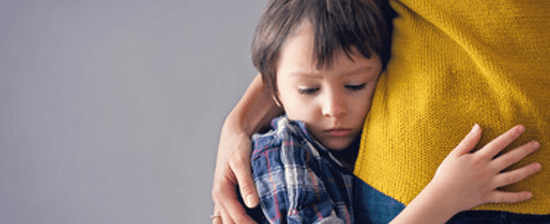6 Ways To Help Your Child Cope With Situational Anxiety
Situational Anxiety; 6 ways to help your child adapt to changes, cope with stress and thrive in a new situation.
Every parent hopes that their child will be healthy and happy. Inevitably, there will be situations that your child may find difficult, particularly when there’s a change in their lives or they’re presented with a new unfamiliar situation, which can lead to them feeling stressed.
For instance, when a family relocates internationally, the transition process will be unsettling for everyone, especially children.
For an Australian family moving to Singapore, your child will be adjusting to many new things including new surroundings, a new culture, a new home, making new friends, and they will be starting at a new school such as the Australian International School. With most of these changes, your child will probably easily adapt, such as settling in to the school curriculum. However, with other changes your child might find it more difficult to adjust and they may become worried and stressed, which can make the transition process a bit trickier.

What is Situational Anxiety?
Situational anxiety can be seen as stress and worry caused by new experiences, events and changes. A common form of Situational Anxiety is ‘stage fright’; when a person becomes anxious before a performance. Often these feelings dissipate once the person is exposed to and adjusts to the situation, such as going on stage and realising that they can cope, achieve and might actually have fun!
It’s important to remember that Situational Anxiety is very normal, and everyone experiences it throughout their lives. However, during a time when there’s lots of changes, such as an international relocation, situational anxiety can be difficult for your child to manage and there are ways that you can help them cope, adapt and thrive in their new environment.
Recognising the Symptoms
Some children will be able to verbally communicate to you their worries and feelings of anxiety, but some children might not be aware of what they’re feeling and therefore how to communicate it.
Some symptoms can include changes in your child’s behaviour. The stress might trigger a higher level of activity than how they act normally, and they might fidget and have trouble sitting still. You may notice that your child has difficulty with focusing and becomes distracted more easily. Your child might withdraw, and become less talkative. You could observe that your child is more sensitive than usual, crying easily or becoming frustrated over small things. Physical symptoms can include a feeling of ‘butterflies in the stomach’, sweaty palms, shakiness, stomach aches and headaches.
6 ways to help your child
1. It’s important to assist your child in building awareness of their emotions
When you see that your child is exhibiting stress symptoms, name it for them. You could say “I’ve noticed that you’re biting your fingernails and having trouble with focusing on your homework. You seem nervous to me. Is this what you’re feeling?”
Then ask questions like; “What else are you feeling in your body?” “Can you think of other words to describe how you’re feeling?”, and “Is there something coming up that you’re worried about?”
Not only will this help your child to build awareness of their emotions, but it will also build their vocabulary around emotions and teach them the link between thoughts and feelings. Your child will likely feel a great sense of relief to know that there’s words for how they’re feeling, and that you understand them
2. Teach your child that stress is normal
Talk to your child about how a certain amount of stress can be helpful to them and that they can utilise the feeling. For instance, stress can give them more energy and motivation to take on the challenge. Physical changes in their body (such as more oxygen and blood flow) can lead to greater brain function. Explain how feelings of excitement and stress can be very similar and ‘reframing’ stress to be a positive will help them to thrive in stressful situations.
3. Mindfulness
Mindfulness strategies have been proven to be very helpful. You can encourage your children to engage mindfully in many ways including focusing on the present moment by becoming aware of their senses (feeling of their breath in their nostrils, feeling of their clothes against their skin), noticing 10 things in the room or listening to different sounds. You can also encourage them to think of a nice moment in detail that occurred in the past or the future.
4. Breathing
Breathing exercises can be effective in reducing stress. Teach your child to take ‘belly breaths’; breathing in slowly, all the way to their belly and feeling their belly expand, and then slowly breathing out again.
5. Guided Imagery
Help your child to imagine the situation they’re worried about when they’re calm. Encourage them to think about the situation in detail. For instance, imagine the room where they’ll be doing the presentation, how many people will be there etc. This will help them prepare mentally and start to adapt to the situation. Encourage your child to think of themselves doing well and feeling confident. It can also be helpful to gradually expose your children by taking them to the environment before the event. For example, booking a school tour.
6. Encourage a Growth Mindset
Talk to your child about how it’s important to challenge themselves, and that often the greatest personal growth and best experiences come from situations that we find hard at first. When we do something that’s difficult, it’s usually important to us and we’ll have a great sense of reward and accomplishment when we achieve it.
There could be times when you become concerned about your child’s levels of stress and worry. You can receive assistance from a paediatrician or psychologist in this case. Your child’s school can also be a source of assistance at this time. The Australian International School has a whole school wellbeing program with teachers and support staff educated in positive psychology and equipped with strategies to help students to thrive. There is also a team consisting of psychologists and counsellors experienced in working with children and families during the transition process and throughout a child’s school life to help them adapt to changes, develop resilience and not only bounce back from challenges but to flourish and thrive in the environment.






